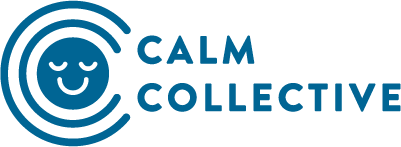Everything we learned about workplace wellbeing at CalmCon
Mental health issues have been brought to the forefront with the global pandemic as the world is still facing disruptions of the virus. Despite increased flexibility for many at work, the social disconnection, economic downturn, concerns over job security have taken a mental toll on workers. Employees around the world are reporting increased anxiety, stress and burnout to name a few.
As the pandemic continues to intrude on our daily lives, employees will need and increasingly demand resources to help them cope with their mental health. With that being said, how can leaders and individual team members play a part in creating an environment of workplace wellness?
Here’s a round-up of the important lessons we’ve learnt from CalmCon’s series of talks on Workplace Wellness.
LEADERS PLAY A CRUCIAL ROLE IN SHAPING WORK CULTURE
In an Asian cultural context where ‘giving face’ and not offending people are important priorities when dealing with others, particularly those who have authority over us, it becomes understandably tough for individuals to raise concerns and/or say no to our bosses.
Some employees may even stress themselves out because they feel obligated to respond to managers’ after-hour emails and texts because they want to ‘do their job well’ or impress their superiors. This becomes an issue when they start to feel like they are unable to turn off from work.
From “How to Achieve Work-life Integration”, Dr James Goh (Organisational development Lead, Halogen Foundation) explains, “As a boss, as a manager, the power is almost in your hands to lead by example and do what’s necessary. So one thing, for example, I do when I communicate is, when I have to send an email in the evening, I will just draft the email first, but I’d choose not to send it until the next working day”.
Arti Ram (Head of Company Marketing, Asia Pacific, Bloomberg LP) shared on the panel “How to Get Support for Your Mental Health at Work” that even when it comes to encouraging the use of EAPs (Employee Assistance Programmes), it all starts with role modelling. Entry-level folks may find it hard to acknowledge or feel like they can have an open discussion about needing a break. However, if their managers are doing so, they will know that it’s ok for them too.
BUT LEADERS AREN’T SUPERHUMAN EITHER
It’s important to also remember that our leaders are also workers, and like everybody else, they too can get stressed. On top of having to worry about business continuity in the context of the pandemic, there is also an added layer of pressure for them to worry about the well-being of staff members
“As a leader, you’re expected to manage P&L (profit and loss), you’re expected to have foresight, strategy, build the right culture, deal with operational efficiency, have individual approaches to people, and care about the mental health of individuals. I think we have to be very careful here because nobody is superhuman in all of these things. Each of us is on a journey. Each of us is hoping to improve ourselves as we go along, and leaders as much as anybody else need support,” says Peta Latimer (CEO, Mercer Singapore) during “Fostering Psychological Safety for High Performing Teams”.
Peta also added that leaders can reduce work-related stress by communicating expectations clearly because people are not necessarily burnt out by the workload. It comes from “being confused, and having all the pillars of your life thrown up in the air. The best thing that we can do as leaders is set far simpler, and clearer expectations”.
THE IMPACT OF SPEAKING UP AND BEING VULNERABLE
Opening our 2-day virtual festival with “Building mental health into workplace wellness”, Dr Candice Schaefer (Global Head of Employee Wellness, Twitter, Inc.) reminded us that “you don’t have to be a mental health professional to talk about mental health”. With a peer support network programme at Twitter, employees can attend training to learn the basics of listening and hold space for fellow employees. This programme was able to provide a sense of safety and normalize the conversation surrounding mental health in the company
Associate Professor Carly Moulang (Thrive Global APAC) shared several micro-steps to better psychological safety in the workplace which includes facilitating everyone to speak up. By honouring candour, encouraging truth-telling, being open-minded and empathetic when someone is willing to step up. Without having to be afraid that one will be subjected to any form of punishment for speaking up, an organization will start to see incremental positive innovations.
– –
If you focus on employee well-being, it helps not just employees but everything from company culture to the bottom line. Be the organization that creates a future for your employees where their mental health is a clear priority. Let’s create a culture where mental health isn’t shameful but is supported and worked through.
Get access to on-demand replays of all our CalmCon talks at www.calmcon.asia (Available until 15 January 2022)
